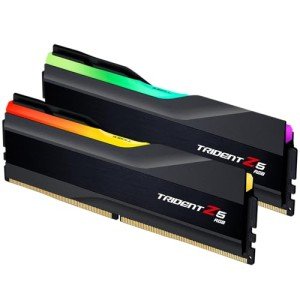RAM (Random Access Memory) is the unsung hero of every high-performance PC, serving as the fast, temporary storage that powers multitasking and smooth operation under heavy workloads. As the bridge between the CPU and storage, RAM ensures that active data is readily accessible, significantly impacting system responsiveness and overall performance. Modern PCs rely on two primary types of memory—DDR4 and DDR5—which each bring their own strengths to the table.
**DDR4: The Tried and Tested Standard**
DDR4 memory has become the longstanding choice for most PCs thanks to its proven reliability, efficiency, and widespread compatibility. With data transfer rates that revolutionized the way systems operate, DDR4 offers a balanced mix of speed and capacity that satisfies the needs of gamers, creators, and professionals alike. Lower power consumption relative to its predecessors, coupled with stable operating frequencies, ensures that DDR4 modules handle multiple applications simultaneously without compromising performance. Whether it’s multitasking in a busy workstation or powering smooth gameplay, DDR4 provides a reliable foundation that has already stood the test of time.
Beyond raw performance, DDR4 is appreciated for its flexibility in terms of capacity. With modules available in a wide range of sizes, it’s simple to build memory configurations that meet various workload demands. Overclocking potential, ample supply of compatible motherboards, and a mature ecosystem of components further make DDR4 an attractive option for a variety of custom PC builds. With established standards, DDR4 continues to support high-end applications and legacy systems that demand robust performance day in and day out.
**DDR5: The Next Generation of Memory**
DDR5 has emerged as the next leap forward in memory technology, designed to meet the escalating performance expectations of modern computing. This innovative standard builds on the strengths of DDR4, yet offers several enhancements that make it distinct. DDR5 modules provide higher data transfer rates, increased density, and improved power efficiency. The overall architecture of DDR5 includes features such as on-die ECC (Error Correction Code), which helps ensure data integrity during high-speed operations—an essential factor for stability in intensive computing and professional environments.
The benefits of DDR5 are particularly evident in scenarios requiring massive data throughput. Gamers and content creators alike can harness its higher frequencies and larger capacities to achieve smoother gameplay and faster rendering. DDR5’s increased bandwidth means that more data is processed concurrently, minimizing bottlenecks in data-intensive workflows. Additionally, enhanced power management in DDR5 modules results in reduced energy consumption, a feature that not only extends battery life in portable devices but also contributes to overall system efficiency in desktop builds.
**Choosing the Right Memory for Your Build**
Both DDR4 and DDR5 have their merits. DDR4 remains widely available, cost-effective, and supported by a mature hardware ecosystem, making it an excellent option for users who need reliable performance and broad compatibility. DDR5, on the other hand, is ideal for those looking to future-proof their systems, embracing the improved speeds and capacities that will be essential as software and workloads continue to evolve. As motherboard manufacturers and CPU designers increasingly support DDR5, the momentum is building for next-generation systems that take full advantage of its capabilities.
When deciding between DDR4 and DDR5, it is important to consider the specific demands of your workload. Memory-intensive tasks such as video editing, 3D rendering, or running virtual machines can potentially benefit from DDR5’s superior data rates and enhanced architecture, while everyday multitasking and gaming still perform excellently with DDR4 configurations. The choice ultimately depends on budget, system compatibility, and long-term upgrade plans.
In summary, RAM is a critical component that directly influences system performance. DDR4 offers established reliability and solid performance for a wide range of applications, while DDR5 introduces groundbreaking enhancements that pave the way for the future of computing. By selecting the right memory type for your custom PC build, you not only ensure smooth operation today but also create a platform that is prepared for the evolving challenges of tomorrow.
---
### SEO Keywords:
RAM, DDR4 memory, DDR5 memory, high-performance RAM, random access memory, PC multitasking, overclocking memory, data transfer rates, enhanced bandwidth, system responsiveness, future-proof memory, energy-efficient RAM.
View our related products
See more

Corsair Vengeance RGB 16GB Memory
Corsair
Product Review Score
4.55 out of 5 stars
170 reviews€54.99


PC Components – RAM: DDR4 and DDR5
Related Articles
Essential High-Performance PC Components You Need Now
Upgrade your setup with the must-have parts for unbeatable gaming and productivity
Top Picks for Best High-Performance PCs
Find the perfect power machine for gaming, work, or creative projects
Your Guide to the Best High-Performance PCs
Find the Right PC for Your Gaming and Creative Needs
View our related products
See more

Corsair Vengeance RGB 16GB Memory
Corsair
Product Review Score
4.55 out of 5 stars
170 reviews€54.99




